#umberto ii
Text
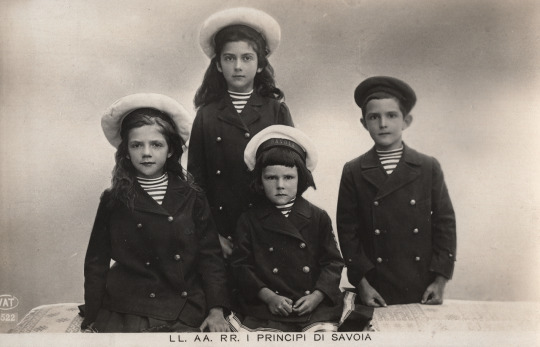
OTMAA Contemporaries: The Italian Royal Children.
From left: Princess Mafalda (1902), Princess Yolanda (1901), Princess Giovanna (1907), and Prince Umberto (1904). They would eventually joined by Princess Maria Francesca (1914).
#otmaa contemporaries#yolanda of savoy#mafalda of savoy#giovanna of savoy#maria francesca of savoy#umberto ii#my collection#italian royal family
15 notes
·
View notes
Text

Postcard issued on the occasion of the engagement between Princes Umberto of Italy and Maria José of Belgium.
19 notes
·
View notes
Text

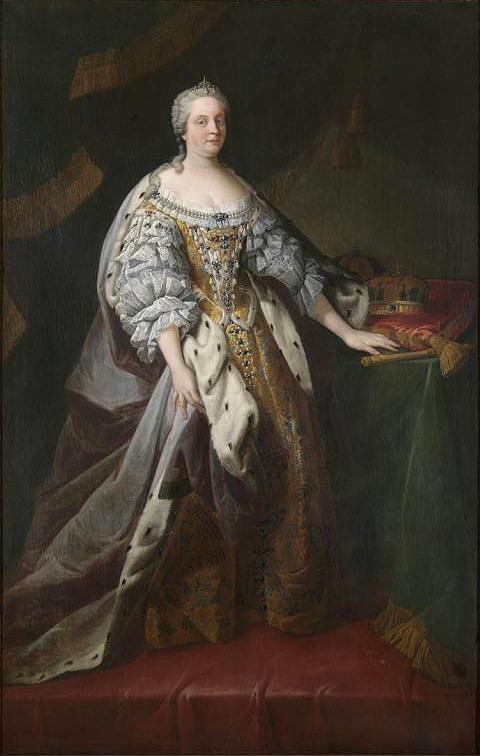
It's time for the return of the “Living People Related to Maria Theresa” game, started by @vivelareine
Here we have a descendant of hers through her daughter, Maria Carolina, the Queen of Naples and Sicily. (Though you can also trace her line of descent to other children of Maria Theresa, due to the amount of intermarriage among the Habsburg Dynasty). Her name is Vittoria of Savoy, and she's a 20 year old fashion model, who is studying art history and political science.
Vittoria of Savoy (Born December 29th, 2003) –> Emanuele Filiberto of Savoy –> Vittorio Emanuele of Savoy –> Umberto II –> Victor Emmanuel III –> Umberto I –> Victor Emmanuel II –> Maria Theresa of Austria –> Luisa of Naples and Sicily –> Maria Carolina of Austria –> Maria Theresa
#vittoria of savoy#maria theresa#umberto i#maria carolina of austria#umberto ii#victor emmanuel iii#Victor Emmanuel II#maria theresa of austria#luisa of naples and sicily#long live the queue
7 notes
·
View notes
Text
so we finished watching season 2 of Picard last night, and just. whew, friends, what? a truly baffling array of choices. things i simply cannot get over:
the commitment to doing every Single joke from The Voyage Home while simultaneously Strenuously Avoiding doing anything campy or goofy
like, the reason TVH works is that the main cast are all just Buffoons — Kirk does not know how money works, Spock is dressed as a jogger in a bathrobe, Scottie tries to talk into a computer mouse, and it is all GREAT. in Picard S2, it's like, they say they don't know much about this period in history, but they all seem to click into place fairly seamlessly. in general watching this new era of Trek, it feels like the writers have simply forgotten the pleasure of a good silly camp romp, and constantly referencing one of the best silliest campiest romps in the canon is uh, not helping
the climax of the season revolves around?? Q's character development??? Q???? QUEUE?????? baffling
in general what was even Q's plan here. is he . . . trying to sabotage the Europa mission or not? why is All Of This necessary for Picard to forgive himself, if that's Q's real goal? just like generally this framing does not make sense to me and so resting the entire season on it is. a choice, i guess
also when have we ever been asked to care about Q's interiority before, when have we ever been asked to be On His Side as opposed to whatever human he's fucking with
how are we relating to canon here. h o w. there are some Real deep cuts, but then also some like, fairly prominent episodes that are just?? ignored???
like, ok:
Guinan and Picard have a fairly significant adventure together in 1800s San Francisco (in “Time’s Arrow”). it is canon then that she doesn't know Picard yet. this is an incident she will remember for 500+ years and reference on board the Enterprise D. but in this season of Picard, she appears not to know him at all and to once more be meeting him for the first time. these two first meetings are . . . difficult to reconcile
but we are apparently doubling down on “Wesley Crusher was just the super specialest boy and he managed to transcend the limits of physical reality because of his big special brain”
we are apparently pretending that Robert Picard just . . . doesn't exist? isn't around for Jean-Luc's childhood? this isn't really technically a continuity error but Robert and Jean-Luc's relationship felt real and specific and grounded in the particulars of their two characters whereas Yvette just feels like generic sexist “ooooooh his mother was ~crazy~” schlock, and losing the former for the latter is uh. not an improvement
we're doubling down on Gary Seven, tho! Gary fucking Seven!!!!! remember that beloved character from an episode that was definitely a good idea??? why
actually, specifically, tho: it feels like this is a continuation of Star Trek’s reluctance/inability to grapple with the less savory parts of Gene Roddenberry as a human being, particularly his misogyny. to stick only to the example at hand, he made the “Assignment: Earth” filming experience so miserable for Teri Garr (by, for example, relentlessly shortening the length of her skirt, even over the objections of the costume designer) that Garr has absolutely refused to talk about Star Trek in subsequent interviews. i was obviously not on set, but the vibe i get is extremely that filming that episode would clearly and unambiguously been a hostile workplace environment by contemporary standards of sexual harassment. so i, personally, have a hard time being like “ah yes, ‘Assignment: Earth’, what a fun bit of forgotten canon to incorporate wholesale into our new series without grappling with the specifics of its creation in any way!”. the vibes are just . . . rancid
anyway, moving on from continuity gripes,
it feels like a real missed opportunity to have not cast David Duchovny as the FBI agent. this is really not the showrunners’ fault, but i’m in a hating sort of mood, so i’m going to take off points anyway
“Dark Page” was not a great idea in 1993 and it isn’t any better now
circling back to “covering the hits without any understanding of what made them good”, Raffi’s encounter in a camp of unhoused people feels like a nod to “Past Tense” without any willingness to actually . . . engage with what “Past Tense” was saying. for all that i have some issues with some of its narrative choices, “Past Tense” devotes significant, sustained screen time to characters that society has decided to discard and is relentless in hammering home the message that “this is not just and it cannot be reformed into justness”. here, Raffi stumbles across an encampment, someone immediately tries to mug her at gun point, she beats him up, she shares a rueful quip about “gosh, wild that such a prosperous society can’t be assed to take care of people”, and then we just move on and never mention this again. like, we get Words saying that Homelessness Bad, but what we are shown is “unhoused people are scary and dangerous and it’s ok for our heroes to beat them up”
(i actually think that In General there is a lot of wasted potential with Raffi, altho mostly the fault here lies in season 1. “very competent Starfleet officer who is also dealing with paranoid delusions and falling apart at the seams about it” is an interesting premise for a Star Trek character if done well! and then S1 is just like “oh, nope, actually, she was right about everything, there was a massive, bizarre conspiracy that did exactly what she thought they did, she's fine and correct and everyone who ever doubted her is an ass”)
(i also think that the “love always ends in grief” sequence from Discovery S4, for all of that season’s considerable messiness, is a much tighter and more powerful expression of that theme than the wandering, haphazard approach to it here. i think these shows are meant to be watched in concert, but the back-to-back seldom does Picard any favors)
we continue to lean into Human Exceptionalism and i continue to roll around on the floor going “ughhhhhhhhhhhhhhhhhhhhhhhhhhhhhhhhhhhh” about it
more elaborate thoughts on that go in my “if i were making Enterprise” post, tho
THAT SAID
on the topic of exceptionalism, i hate the FUCK out of the bit in Crusher’s recruitment speech where he’s like “do you want to be ordinary, or do you want your life to have purpose and meaning?” as tho???? ordinary lives????? cannot have purpose and meaning???????????? look me in the eyes, writers. no, no, look me Directly in the eyes: fuck you, fuck that, i am doing cartoon violence to you. the mindset that only extraordinary lives are worth living is toxic bullshit that distorts so much of our mental, political, and artistic landscape. ordinary lives can have so much meaning and purpose, they can be so very beautiful and rich. ordinary lives can be very good to live. i think Star Trek, in general, focuses too much on elites as The Only People Who Really Matter, but to elevate that to the level of explicit text is just. fucking devastating. unspeakably bleak. absolute philosophical train wreck of a season finale, on a par with Discovery’s “a Starfleet admiral actively and deliberately planned and tried to carry out a genocide and faced zero career repercussions for it that we can see”. clown car nonsense
in conclusion: i have drunk the haterade, g-d this season sucked, i can’t wait to make April 13 “Jurati eating car batteries day” and take it away from the Homestucks
#let's take a walk thru these here stars#did i have a Picard tag? i feel like i can't possibly have#thinky thoughts#Star Trek: Picard#Picard S2#unabashed hatery#i promise we can stop doing Wrath of Khan again now i promise i promise i promise#also like#i don't even want to get into the "why did we have to just sit thru an entire fucking fascist rally#or the implication that uh. fascist Earth would be really successful at fighting the Borg actually#IN GENERAL i think our fiction is Way too ready to paint fascists as Very Competent At War#they are not#i don't know how many people know this but there was a small little tiff called World War II#and the fascists did not win it#because fascists are incompetent and fascism is inherently unstable as an ideology#Umberto Eco said that fascists are condemned to lose wars because they are incapable of realistically assessing the strength of their enemi#and he was RIGHT#obviously that should be “enemies” but APPARENLY my tags are too long#whatever#anyway#rants#sigmastolen#i feel like you will appreciate this even if you don't watch Picard
15 notes
·
View notes
Text
never think that the details of your set are immune to historical criticism
#there was a photo of the children of nicholas ii on the set for act i of fedora…when the opera is set in the 1880s…#and that specific photo wasn’t taken until about 1913#I HAD AN ANASTASIA ROMANOV PHASE IN MIDDLE SCHOOL YOU CANNOT GET PAST ME#opera tag#opera#historical accuracy#fedora#giordano#umberto giordano
3 notes
·
View notes
Text
Dieci anni di monarchia assoluta. (...) Poi a gennaio 2015, King George aveva lasciato il trono perché proprio non ce la faceva più. (...) Altrimenti, potete starne certi, sarebbe rimasto ancora là (...) a comandare le operazioni, a fare e disfare governi, a organizzare ribaltoni (...). E anche dopo, fuori dalla reggia (...) per un bel po' si è fatto sentire: (a)ltro che pensionato.
(...) quella di Giorgio Napolitano non è stata una presidenza leggera, neutra, notarile, ma sempre al limite e talvolta debordante. Come banale non è stata la sua intera vita pubblica. (...)
Giorgio Napolitano era nato a Napoli (...). Figlio di un avvocato (...), studi classici, (...). Elegante, sobrio, parlava un inglese perfetto: nel Pci per le sue posizioni lo chiamavano l'amerikano. Oppure re Umberto (...).
(A)ll'università si era iscritto al Gruppo Universitari Fascisti (...), nel 194(5) entrò nel Pci. Deputato dal 1953, (...), diventò presto uno degli esponenti di maggior peso dell'ala riformista, i cosiddetti miglioristi (...).
(A)lla morte di Enrico Berlinguer (...) gli fu preferito (come segretario del Partito) il più (...) ortodosso Alessandro Natta. (...)
Nel 1992 venne eletto presidente della Camera. (...) Nel 1996 Romano Prodi lo scelse come ministro degli Interni (...). Dopo la caduta del governo del Professore, (...) Ciampi lo nominò senatore a vita.
Il dieci maggio 2006, (...) superando Massimo D'Alema, venne eletto undicesimo presidente della Repubblica italiana. (...) Due anni dopo Silvio Berlusconi rivinse le elezioni e per Napolitano si aprì un difficile periodo di coabitazione. Seguendo le orme di Ciampi, re Giorgio cercava di limitare il Cav con la moral suasion e successi alterni. (...)
(Ne)l 2011 Berlusconi, indebolito da alcune defenzioni nella maggioranza, malvisto da Francia e Germania e (messo) sotto pressione con lo spread (...), fu fortemente convinto a passare la mano a Mario Monti, che nel frattempo King George aveva prontamente nominato senatore a vita.
Regista dell'operazione, voluta da Bruxelles (Parigi e Berlino) e ritenuta un golpe (...), Napolitano. Monti e i suoi tecnici governarono un annetto (...). Nel 2013 nuove elezioni con la vittoria dimezzata del Pd (e il trionfo del m5s) (...). Il sistema si bloccò. (...) Senza governo, senza un accordo, senza un nome per la presidenza: (l')ingorgo istituzionale (...). Il 20 aprile 2013 nacque il Giorgio II.
Tre giorni più tardi, dopo un discorso di fuoco di Napolitano alle Camere, Enrico Letta si insediò a Palazzo Chigi a capo di un esecutivo di unità nazionale (...). Letta tirò avanti per un po', finché il Quirinale non lo sostituì con l'astro nascente Matteo Renzi. Per Napolitano un paio d'anni (di benevolo controllo remoto), fino alle dimissioni nel 2015.
Una lunga monarchia condizionata dalla crisi economica e dal vuoto di potere della politica che il Re della Repubblica ha riempito, segnata pure da ruvidi scontri tra Colle e magistratura, fatta di tanti rimproveri ai giudici «protagonisti», culminata con l'intercettazione «casuale» di un colloquio tra il presidente e Nicola Mancino e il conflitto di attribuzione con la procura di Palermo.(...)
Ritratto accurato di un AVVERSARIO ben più lucido e pericoloso di tutto il resto della masnada idealista autoinculante, cui rivolgere RIP e onesto omaggio - ha combattuto efficacemente; di M.Scafi su https://www.ilgiornale.it/news/politica/record-e-giravolte-politico-che-ha-segnato-nostra-repubblica-2214770.html
L'iscritto al Guf che diventa comunista, da Kruschev all'Amerika dei Dems., l'Internazionalista che diventa Gauleiter di Franza e Cermania, la difesa del proletariato che si fa golpe di Palazzo : medieval machiavellico (è un complimento), ma quale vita ricca di contraddizioni, fu sempre perfettamente lucido e fedele alla linea nella sua vita.
78 notes
·
View notes
Note
Do you have any thoughts about how to do fascism in Arthuriana? Like partially inspired by T.H. White I was thinking of writing Lucius as a sort of combination of a 30s Dictator and the crusading ideal that you get in Medieval literature, which of course looks quite repugnant by today's standards.
I've been turning this over in my head for a few days as it's a very interesting question! To start, let me talk about two versions that did it to different ends.
As you mentioned, in The Once and Future King, Mordred becomes a Hitler (or British fascist) analogue, and predicates his rise to power on persecuting Jews and Moors. I wasn't sure how I felt about this at first, but after thinking it over, I realized that World War II was the defining trauma of White's generation, and if he's going to write about a political faction destroying Britain and plunging it into apocalyptic war, how could they not be fascists? (Plus I got a fanfic out of it.)
On the other hand, in the 2004 King Arthur movie, which I actually overall enjoyed, they made Cerdic the Saxon their fascist villain. He orders all the Celtic women killed so that his men won't breed with them and produce more of their disgusting race...which, if you know anything about the Saxon invasion, is more or less the opposite of how it went. It's like a darker version of the 'tightlacing into dresses without waists' scene in Bridgerton- I'm not a stickler for historical accuracy, but I need it to at least make sense in the world that's being presented to me on screen.
So, what's the deal with fascism? I'll let Umberto Eco give the greater picture, but when I think of fascist villains, I think of three things- an "us" who is great, a "them" who are simultaneously weak and strong, and a mythic "good old days" that never really existed. Given that Arthuriana is a mishmash of time periods and ethnic groups as it is, you have a lot to choose from, both in terms of making it make sense in universe, and in terms of it feeling resonant to a 21st century reader.
If Lucius is your villain (a good choice, I think, he's not used as much as he could be) then you're positioning the "us" as either Rome or Italy. I say "either" because Malory et al had him as an anachronistic Roman emperor, but the Squires Tales series made the interesting choice of him being an Italian prince styling himself the modern Caesar. I'm not Italian, but I think this is something that politicians from Mussolini to Berlusconi have tried to position themselves as to some extent, so I think there's room to explore there.
If "us" is Rome, then "them" must be wherever they're trying to conquer. If you've ever played Fallout New Vegas, the Cosplay Roman Fascists there have "The West" as their enemy, with speeches about how they're doing a great job unifying all the disparate tribes but are hindered by the "degenerates" of the NCR and New Vegas. There are certainly tribes to go around in the British isles, any of which could be your "them" or your "future us, once then kneel." The good old days were the height of the Empire, of course, and depending on whether your Lucius is a Catholic or a Roman pagan, he can call upon a huge history of grandiose mythology to support himself.
If Mordred is your villain, then both his mythic past and his "us" could harken back to the glory days of King Uther, back when the Britons were strong against the Saxons and kings were revered for their might, not their codes of honor. The song Fie on Goodness in Camelot is dark comedy because nobody really talks like that about themselves- but they could voice the same sentiments in different language. "Them" could be Jews and Moors as in T. H. White, but you can pick any influence from the Picts to the Gauls as the simultaneously weak and strong enemy who turned Arthur into a man too soft to lead.
"Uther was a barbarian because he stole another man's wife," Mordred might say, "but Arthur claims to be civilized because he gives his away!"
And then there's that old medieval standbye- the crusades. Just what the hell time period Arthuriana takes place in changes with the writer, but having your villain either outright be a Crusader King or modeling him on one would give you a chilling model to work with. Slaughter and pillage all who get in your way, and you can justify it with ideology. Send every available one of your own men and boys to their deaths and you can do the same. And if the war never ends, so much the better, as your wartime powers never go away.
Thank you for this question, and I'll be very eager to see what you come up with!
29 notes
·
View notes
Text
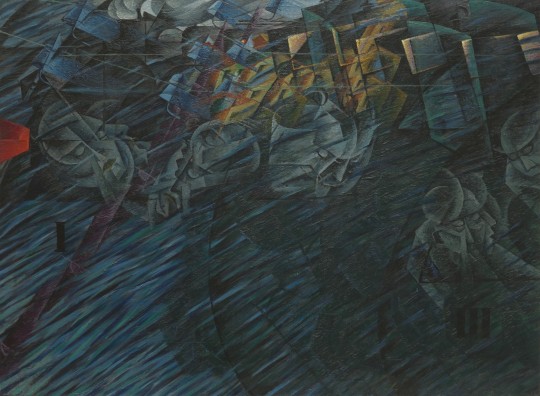
Umberto Boccioni (1882-1916) — States of Mind II: "Those Who Go" (oil on canvas, 1911)
85 notes
·
View notes
Text
Space Marines are not your friend Part II

I keep thinking about this, and apparently a lot of other people keep thinking about this, because the conversation keeps happening. I think I didn't get it quite right the first time round, which is normal and we should embrace being wrong and changing our minds with new information.
So, sometimes you say the Imperium is Fascist and you learn form some dude online that actually they're a dictatorial theocracy or something. This is called splitting hairs but I think there's potential here for a more interesting conversation. It may come as a surprise but Warhammer 40,000, a game about spending whole Sunday afternoons moving little toy soldiers and tanks around on your dining room table with lore written by a whole bunch of different nerds over the last 35 years doesn't have a coherent political narrative.
We're not going to get the answers we're looking for by going over every bit of lore with a fine-toothed comb. Also please don't ask me to do that, some of the writing is really terrible. I've talked before in, I guess, Part I about how Warhammer 40,000 draws on the aesthetics of Fascism and I think this is what's really important. It really doesn't matter if the Imperium fulfils all of Umberto Eco's characteristics of Fascism or if you can find some other political ideology that you think fits better. The fact is that Warhammer 40,000 is a piece of largely visual media that draws on the imagery of Fascism, the same way it draws on the imagery of Feudalism and the Catholic and Orthodox churches.

There's a lot of talk lately about how people like Rick Priestly and Brian Ansell (may he rest in peace) and Richard Haliwell weren't really trying to make statements with their games but just wanted to sell miniatures, and they borrowed liberally from things like 2000AD because it was cool. I think that in itself says something about the game's ideology. It was developed and written in the context of Thatcherite Britain and I wonder if in that context there was an idea that it wasn't necessary to have the thing make political sense (and maybe that's naïve in hindsight, idk?). I don't know for sure but I wonder if 40K comes out of a time when you could be like "hey these cops are Fascists" and wouldn't need to expand on that. People would just get that you were painting in braod strokes and wouldn't demand that you prove that their brutality wasn't justified. I think it's fair to say the writers didn't foresee how big their game would get, or its popularity among military bros, or the rise of Fascism in the Anglosphere in the 2010s.

So, what do we do with this? I think it's important to recognise two things. Firstly, the Imperium isn't just a Fascist state. It's also a Theocracy, and Feudal. More than one of these things can be true. But secondly, we tend to assume our political concepts are universal and timeless. They're not. Here's an interview where Corey Robin situates the Left and Right historically for Adam Conover:
youtube
The point being that the Right isn't just authoritarian, it's a movement to reestablish the power of ruling classes in response to modern Democratic movements. Similarly, Fascism is a distinctly modern concept. It's an attempt to return to the idea, as identified by Robin above, that certain people should rule over everyone else, and it's a reaction against a move towards Democracy and people having freedom from authority.
So, political systems are historically constituted, I think it's fair to say that 38,000 years in the future our politics will be unrecognisable to us now. So like, does Fascism exist 38,000 years in the future, would it even be possible when you're trying to govern a billion worlds, is it "necessary" when state control of humanity is total, and Democracy, Socialism and Trade Unionism aren't even distant memories? Maybe the answer is it doesn't matter. I don't find that terribly satisfying.
The Imperium's political system isn't not Fascism. Rather, the writers of Warhammer 40,000 depicted a political system that's a sort of aggregate of political systems that are recognisable to a modern audience (and particularly pertinent to an audience living in Thatcherite Britain), and Fascism plays a major role in that aggregate.
So the upshot is, if you want to call it Fascism, you are correct, and if someone calls it Fascism and you want to say actually it's this extremely specific political thing you've just come up with to disprove them, consider shutting up.
22 notes
·
View notes
Text


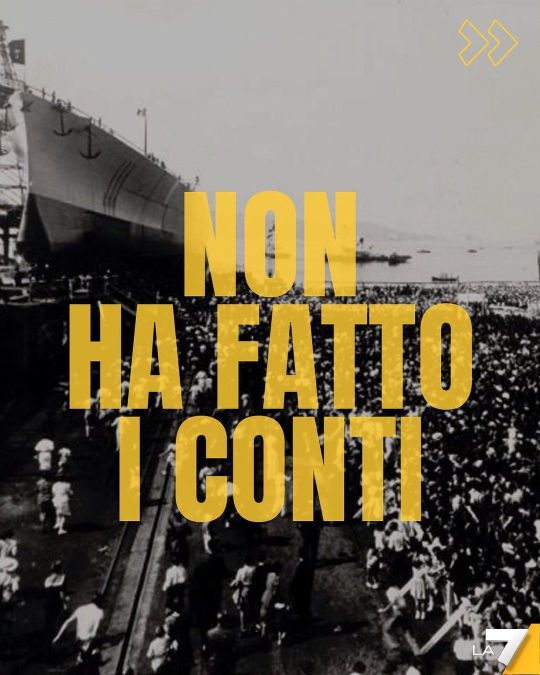
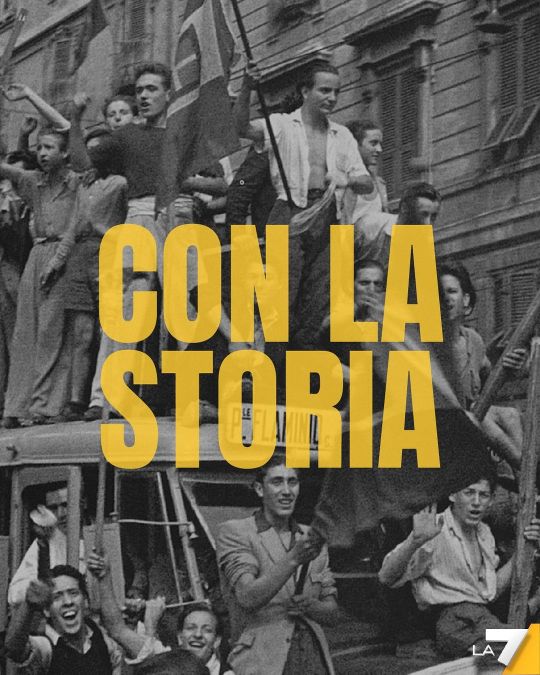
Il 25 aprile è divisivo per chi non ha fatto i conti con la storia.
Si commemora il 79° Anniversario della Festa della Liberazione, un momento cruciale nella storia della nostra Repubblica poiché segnò la fine della guerra, dell'occupazione nazista e del regime fascista, nonché la riconquista dell'indipendenza e della libertà.
In questa data, iniziò la ritirata dei tedeschi e dei soldati della Repubblica di Salò da Milano e Torino, in seguito allo sfondamento della Linea Gotica da parte degli alleati e all’azione della Resistenza.
Su iniziativa del presidente del Consiglio Alcide De Gasperi, Re Umberto II emanò il 22 aprile 1946 un decreto che istituiva il 25 aprile come festa nazionale in commemorazione della completa liberazione del territorio italiano.
9 notes
·
View notes
Text

OTMAA Contemporaries: The Italian Royal Family.
From left: Yolanda (1901) with Maria Francesca (1914), Umberto (1904), Mafalda (1902) and Giovanna (1907).
Like OTMAA, there were four sisters and only one brother; but in this case, the brother was the middle child.
This generation of Italian royalty did have some Romanov connections, as their mother, Queen Elena, was born a princess of Montenegro, and her sisters Militza and Anastasia had married into the Romanov family. Therefor the young Italian royals were first cousins of Roman Petrovich and his sisters Marina and Nadejda.
Another aunt, Zorka, had married into the Serbian royal family, and the Italians also counted King Alexander of Serbia/Yugoslavia and his sister, Elena Petrovna, who married Prince Ioann Konstantinovich, among their cousins.
#otmaa contemporaries#italian royal family#yolanda of savoy#mafalda of savoy#umberto ii#giovanna of savoy#maria francesca of savoy#press photo#my collection
20 notes
·
View notes
Photo

Youth Portrait of Umberto II of Savoy. By Antonio Zoppi.
#antonio zoppi#full length portrait#casa savoia#full-length portrait#house of savoy#kingdom of italy#regno d'italia#king umberto ii
4 notes
·
View notes
Photo
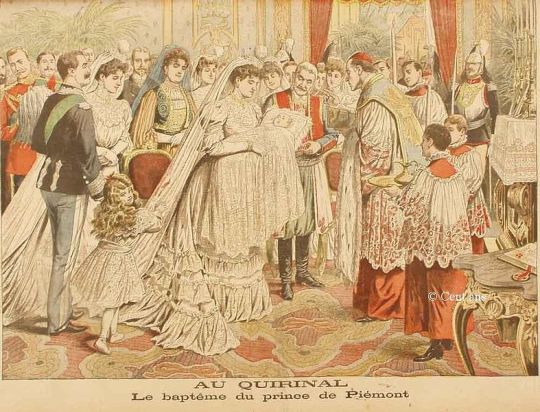
The Baptism of the Prince of Piedmont at the Quirinal Palace in Rome.
The Prince in question is the future Umberto II. Also pictured are his parents, Victor Emmanuel III and Elena of Montenegro, along with his maternal grandfather, Nicholas I and his paternal Grandmother, Margherita of Savoy.
#umberto ii#victor emanuel iii#elena of montenegro#nicholas i#margherita of savoy#long live the queue
23 notes
·
View notes
Text
Royal Godparents to Royal Godchildren
I did this list back in 2012, and got some great responses. I've updated and edited parts of the list. Again, any corrections and/or adds, message me! Thanks in advance!
When choosing godparents for their children, the parents often chose friends or other relatives. Often in royal circles, royals also pick other royals. Here’s a partial list. (Yes, I know some lists are incompelte as some of these royals’s godchildren are not royals themselves.) If you have any additions, please feel free to message me!
Belgium
King Baudouin I
Princess Marie-Christine of Belgium (1951)
King Leopold III
Princess Beatrix of The Netherlands (1938)
Princess Marie-Astrid of Luxembourg (1954)
King Philippe of The Belgians (1960)
Queen Astrid
Princess Astrid, Mrs. Ferner (1932)
King Albert II
Princess Marie-Esméralda of Belgium (1956)
Queen Paola
Prince Amedeo of Belgium, Archduke of Austria-Este (1986)
King Philippe
Prince Amedeo of Belgium, Archduke of Austria-Este (1986)
Princess Marie Gabrielle de Nassau (1986)
Queen Matilde
Princess Alexia of The Netherlands (2005)
Princess Isabella of Denmark (2007)
Princess Astrid, Archduchess of Austria-Este
Prince Sébastien of Luxembourg (1992)
Prince Amedeo, Archduke of Austria-Este
Princess Elisabeth of Belgium, The Duchess of Brabant (2001)
Princess Claire
Princess Eléonore of Belgium(2008)
Prince Lorentz, The Archduke of Austria-Este
Prince Carl-Johan de Nassau (1992)
Bulgaria
Queen Margarita
Prince Umberto of Bulgaria (1999)
Konstantin-Assen, Prince of Vidin, Duke of Saxony
Infanta Sofia of Spain (2007)
Princess Rosrio
Doña Irene de Todos los Santos Urdangarín y de Borbón (2005)
Denmark
Queen Ingrid
Princess Margaret, Countess of Snowdon (1930)
King Carl XVI of Sweden (1946)
King Christian X
Princess Benedikte of Denmark, Princess of Sayn-Wittgenstein-Berleburg (1944)
Queen Anne-Marie of Greece (1946)
Queen Alexandrine
Princess Benedikte of Denmark, Princess of Sayn-Wittgenstein-Berleburg (1944)
Queen Anne-Marie of Greece (1946)
Princess Dagmar
Queen Anne-Marie of Greece (1946)
Princess Thyra
Princess Astrid, Mrs. Ferner (1932)
King Fredrick IX
King Carl XVI of Sweden (1946)
Queen Margarethe II
King Williem-Alexander of The Netherlands (1967)
Crown Prince Hakon of Norway (1973)
Prince Carl Phillip of Sweden (1979)
Crown Prince Fredrick of Denmark
Count Nikolai af Monzepat (1999)
Countess Ingrid Alexandra Irma Astrid Benedikte von Pfeil und Klein-Ellguth (2003)
Princess Ingrid Alexandra of Norway (2004)
Prince Oscar Carl Olof of Sweden, Duke of Skane (2016)
Crown Princess Mary
Count Henrik af Monzepat (2009)
Konstantin Gustav Heinrich Richard Johannsmann (2010)
Princess Estelle of Sweden (2012)
Prince Christian
Prince Gustav Alberct of Sayn-Wittgenstein-Berleberg (2023)
Princess Marie
Princess Josephine of Denmark (2011)
Princess Caroline-Mathilde
Princess Benedikte of Denmark, Princess of Sayn-Wittgenstein-Berleburg (1944)
Princess Elisabeth
Theodor Christian Emmanuel Rosanes af Rosenborg (2009)
Princely Family of Lieiningen
Princess Alexandra
Princess Alexandra Charlotte Ulrike Maryam Virgina of Hanover (1999)
Princely Family of Hanover
Princess Sophie of Hanover
Prince Edward, The Duke of Edinburgh (1964)
Princely Family of Hesse
Prince Philipp
Count Friedrich Richard Oscar Jefferson von Pfeil und Klein-Ellguth (1999)
Princely Family of Waldeck and Pyrmont
Princess Elisabeth
Princess Beatrix of The Netherlands (1938)
Princely Family of Liechtenstein
Prince Constantin
Prince Georg Antonius of Liechtenstein (1999)
Princess Margaretha
Archduke Imre of Austria (1985)
Princess Louise of Belgium (2004)
Princely Family of Monaco
Prince Albert
Baron Jean-Leonard Taubert-Natta (1974)
Pierre Rainier Stefano Casiraghi (1987)
Louis Robert Paul Ducruet (1992)
Pauline Grace Maguy Ducruet (1994)
Raphaël Casiraghi Elmaleh (2013)
Princess Charlene
Raphaël Casiraghi Elmaleh (2013)
Princess Caroline of Hanover
Louis Robert Paul Ducruet (1992)
Pauline Grace Maguy Ducruet (1994)
Princess Stephanie
Andrea Albert Pierre Casiraghi (1984)
Charlotte Marie Pomeline Casiraghi
Princess Alexandra Charlotte Ulrike Maryam Virgina of Hanover (1999)
Baroness Elisabeth Anne de Massy
Princess Stephanie of Monaco, Countess of Polinac (1965)
The Netherlands
Queen Juliana
King Carl XVI of Sweden (1946)
Queen Anne-Marie of Denmark (1946)
King Williem-Alexander
Count Claus-Casmir van Orange-Nassau, Jonkheer van Amsberg (2004)
Countess Zaria of Oranje-Nassau (2006)
Princess Estelle of Sweden (2012)
Prince Constantijn
Princess Catharina-Amalia of The Netherlands, The Princess of Orange (2003)
Countess Luana of Orange-Nassau, Jonkvrouwe van Amsberg (2005)
Prince Friso
Countess Eloise van Orange-Nassau, Jonkvrouwe van Amsberg (2002)
Princess Alexia of the Netherlands (2005)
Norway
King Haakon VII
Princess Ragnhild, Mrs. Lorentzen (1930)
Princess Astrid, Mrs. Ferner (1932)
Queen Anne-Marie of Greece (1946)
Queen Maud
Princess Ragnhild, Mrs. Lorentzen (1930)
Princess Astrid, Mrs. Ferner(1932)
King Olav V
Princess Margriet Francisca of the Netherlands (1943)
King Carl XVI Gustaf of Sweden (1946)
Princess Märtha Louise of Norway (1971)
Crown Princess Martha
Crown Princess Martha
Queen Anne-Marie of Greece (1946)
King Harald
Crown Princess Victoria of Sweden (1977)
Maud Angelica Behn (2003)
Princess Ingrid Alexandra of Norway (2004)
Queen Sonja
Prince Sverre Magnus of Norway (2005)
Crown Prince Hakkon
Maud Angelica Behn (2003)
Prince Christian of Denmark (2005)
Princess Estelle of Sweden(2012)
Crown Princess Mette-Mairt
Prince Christian of Denmark (2005)
Emma Tallulah Behn (2008)
Princess Märtha Louise
Count Friedrich Richard Oscar Jefferson von Pfeil und Klein-Ellguth (1999)
Princess Ingrid Alexandra of Norway (2004)
Princess Ragnhild, Mrs. Lorentzen
Princess Märtha Louise of Norway (1971)
Spain
Queen Victoria Eugenia
Infante Juan, Count of Barcelona (1913)
Doña María del Rosario Cayetana Fitz-James Stuart y Silva, 18th Duchess of Alba de Tormes, Grandee of Spain (1926)
Queen Fabiola of Belgium (1928)
Prince Albert of Monaco (1957)
Felipe, Prince of Austrias (1968)
King Juan Carlos
Don Felipe Juan Froilán de Todos los Santos de Marichalar y Borbón (1998)
Leonor, The Princess of Asturias (2005
Queen Sofia
Leonor, The Princess of Asturias (2005)
King Felipe VI
Princess Sofia Vidinska of Bulgaria (1999)
Doña Victoria Federica de Todos los Santos de Marichalar y de Borbón (2000)
Prince Vincent of Denmark (2011)
Infanta Elena
Don Juan Valentín de Todos los Santos Urdangarín y de Borbón (1999)
Prince Achileas-Andreas of Greece (2000)
Infanta Christina
Don Miguel de Todos los Santos Urdangarín y de Borbón (2002)
Iñaki, the former Duke of Palma de Mallorca
Don Miguel de Todos los Santos Urdangarín y de Borbón (2002)
Infanta Maria Cristina
Princess Marie-Christine of Belgium (1951)
Infanta Cristina, Duchess of Palma de Mallorca (1965)
Princely Family of Sayn-Wittgenstein-Berleburg
Gustav, 7th Prince of Sayn-Wittgenstein-Berleburg
Count Friedrich Richard Oscar Jefferson von Pfeil und Klein-Ellguth (1999)
Konstantin Gustav Heinrich Richard Johannsmann (2010)
Prince Vincent of Denmark (2011)
Carina, Princess of Sayn-Wittgenstein-Berleberg
Countess Athena af Monzepat
Princess Nathalie of Sayn-Witentein-Berleburg
Countess Ingrid Alexandra Irma Astrid Benedikte von Pfeil und Klein-Ellguth (2003)
Princess Benedikte
Prince Joachim of Denmark (1969)
Princess Madeleine of Sweden, Duchess of Hälsingland and Gästrikland (1981)
Royal Family of Italy
Prince Carlo, Duke of Castro
Princess Joesphine of Denmark (2011)
Greece
Queen Olga
Prince Phillip, Duke of Edinburgh (1921)
Prince George
Queen Anne-Marie of Greece (1946)
King Constantine II
Prince Constantijn of the Netherlands (1969)
Prince William of Wales (1982)
Crown Prince Pavlos
Prince Christian of Denmark (2005)
Prince Sverre Magnus of Norway (2005)
Princess Alexia
Don Pablo Nicolás Sebastián de Todos los Santos Urdangarín y de Borbón (2000)
Countess Ingrid Alexandra Irma Astrid Benedikte von Pfeil und Klein-Ellguth (2003)
Princess Isabella of Denmark (2007)
Emma Tallulah Behn (2008)
Prince Nikolas
Count Friedrich Richard Oscar Jefferson von Pfeil und Klein-Ellguth (1999)
Grand Ducal Family of Luxembourg
Grand Duchess Charlotte
Princess Marie-Astrid of Luxembourg (1954)
Grand Duchess Josephine-Charlotte (1927-2005)
Princess Astrid of Belgium, Archduchess of Austria-Este (1962)
Prince Felix (1893-1970)
Prince Albert of Belgium (1934)
Princess Margaretha of Luxembourg (1957)
Prince Jean of Luxembourg (1957)
Princess Marie-Gabrielle (1925)
Grand Duke Henri (1955)
Prince Jean (1957-)
Prince Félix of Luxembourg (1984)
Grand Duchess Joesphine-Charlotte
Princess Marie-Esméralda of Belgium (1956)
Princess Astrid of Belgium, Archduchess of Austria-Este (1962)
Grand Duke Henri
King Albert II of Belgium (1934)
Princess Marie-Gabrielle of Luxembourg (1986)
Guillaume, Hereditary Grand Duke
Prince Sébastien of Luxembourg (1992)
Prince Paul-Louis of Luxembourg (1998)
Prince Noah of Nassu (2007)
Princess Ariane of the Netherlands (2007)
Princess Alexandra
Prince Gabriel de Nassau (2006)
Prince François Henri Louis Marie Guillaume of Luxembourg (2023)
Prince Louis
Prince Charles Jean Philippe Joseph Marie Guillaume of Luxemborug (2020)
Princely Family of Sayn-Wittgenstein-Hohenstein
Prince Georg of Sayn-Wittgenstein-Hohenstein
Countess Ingrid Alexandra Irma Astrid Benedikte von Pfeil und Klein-Ellguth (2003)
Sweden
King Gustaf V
Princess Ragnhild, Mrs. Lorentzen (1930)
King Carl XVI Gustaf of Sweden (1946)
Princess Benedikte of Denmark, Princess of Sayn-Wittgenstein-Berleburg (1944)
Prince Carl of Sweden & Norway (1861-1951)
Princess Ragnhild, Mrs. Lorentzen (1930)
Princess Astrid, Mrs. Ferner (1932)
Prince Eugen of Sweden & Norway (1865-1947)
Princess Astrid, Mrs. Ferner (1932)
Princess Ingeborg of Sweden & Norway (1878-1958)
Princess Ragnhild, Mrs. Lorentzen (1930)
Princess Astrid, Mrs. Ferner (1932)
Princess Margaretha of Sweden & Norway
Princess Benedikte of Denmark, Princess of Sayn-Wittgenstein-Berleburg (1944)
Princess Margaretha of Luxembourg (1957)
Princess Margaretha (1899-1977)
Prince Jean of Luxembourg(1957)
Princess Ingeborg
Princess Benedikte of Denmark, Princess of Sayn-Wittgenstein-Berleburg (1944)
King Carl XVI Gustav
Hakon, Crown Prince of Norway (1973)
Crown Princess Victoria
Prince Constantine Alexios of Greece & Denmark (1998)
Baroness Madeleine von Dincklage (1999)
Princess Catharina-Amalia of the Netherlands (2003)
Princess Ingrid Alexandra of Norway (2004)
Prince Christian of Denmark (2005)
Princess Eléonore of Belgium (2008)
Princess Leonore Lilian Maria of Sweden, The Duchess of Gotland (2014)
Prince Alexander Erik Hubertus Bertil of Sweden, The Duke of Södermanland (2016)
Prince Carl Phillip
Princess Estelle of Sweden, The Duchess of Ostergotland (2012)
Prince Nicolas of Sweden, Duke of Ångermanland (2015)
Princess Madeleine
Prince Oscar Carl Olof of Sweden, The Duke of Skane (2016)
Prince Gabriel Carl Walter of Sweden, The Duke of Dalarna (2017)
Princess Christina
Prince Joachim of Denmark (1969)
Princess Désirée, Baroness Silfverschiöld
Crown Princess Victoria of Sweden (1977)
Prince Bertil, Duke of Halland
Queen Anne-Marie of Greece (1946)
Prince Carl Phillip of Sweden (1979)
Princess Birgitta
Prince Carl Phillip of Sweden (1979)
Princess Margaretha
Princess Märtha Louise of Norway (1973)
Mr. Gustaf Magnusson
Prince Nicolas Paul Gustaf of Sweden, The Duke of Angermanland (2015)
Mr. Victor Magnusson
Prince Alexander Erik Hubertus Bertil of Sweden, Duke of Södermanland (2016)
United Kingdom
Queen Victoria
Prince Albert Edward Kamehameha of Hawaiʻi (1858–1862)
Prince Alfred Alexander William Ernest Albert of Edinburgh, later Hereditary Prince of Saxe-Coburg and Gotha (1874–1899)
Princess Alice Mary Victoria Augusta Pauline of Albany (1883–1981)
Prince Edward Albert Christian George Andrew Patrick David of York, later Edward VIII (1894–1972)
Prince Albert Frederick Arthur George of York, later George VI (1895–1952)
Grand Duchess Olga Nikolaevna of Russia (1895–1918)
Princess Victoria Alexandra Alice Mary of York (1897–1965)
Prince Louis Francis of Battenberg, later 1st Earl Mountbatten of Burma (1900–1979)
King George V
Queen Elizabeth II (1926)
Queen Mary
Queen Elizabeth II (1926)
Princess Margriet Francisca of the Netherlands (1943)
Queen Anne-Marie of Greece (1946)
Mary, Princess Royal and Countess of Harewood
Princess Elizabeth Alexandra Mary of York, later Elizabeth II (1926)
Prince Edward George Nicholas Patrick Paul, The Duke of Kent (1935)
Prince George, The Duke of Kent
Princess Astrid, Mrs. Ferner (1932)
King Edward VIII
Princess Margaret of York (1930)
Princess Alice, Countess of Athlone
Princess Beatrix of The Netherlands (1938)
Prince Arthur, Duke of Connaught
Princess Elizabeth of York (1926)
Princess Mary, Viscountess Lascelles
Princess Elizabeth of York (1926)
The Princess Victoria
Princess Margaret, Countess of Snowdon (1930)
Princess Ragnhild, Mrs. Lorentzen (1930)
King George VI
Princess Ragnhild, Mrs. Lorentzen (1930)
Queen Elizabeth, The Queen Mother
Prince Alexander of Yugoslavia (1924)
Gerald David Lascelles Esq (1924–1998)
Princess Astrid of Norway (1932)
Princess Alexandra of Kent (1936)
Princess Sofia of Greece, later Queen of Spain (1938)
Princess Irene of the Netherlands (born 1940)
Prince William Henry Andrew Frederick of Gloucester (1941–1972)
Princess Benedikte of Denmark, Princess of Sayn-Wittgenstein-Berleburg (1944)
Prince Richard of Gloucester, later Duke of Gloucester (1944)
Princess Anne of Edinburgh (1950)
The Hon (Robert) Jeremy Lascelles (1955)
Queen Elizabeth II
David Henry George Lascelles, 8th Earl of Harewood (1950)
Princess Fredrike of Hanover (1954)
David Albert Charles Armstrong-Jones, Viscount Linley (1961)
Edwina Victoria Louise Brudenell (1961)
James Robert Bruce Ogilvy (1964)
Princess Theodora of Greece & Denmark (1983)
Princess Margaret, Countess of Snowdon
King Charles III (1948)
Prince Phillip, Duke of Edinburgh
Crown Princess Margareta, Custodian of the Crown of Romania (1948)
Norton Louis Philip Knatchbull, 8th Baron Brabourne (1947)
Princess Maria Tatiana of Yugoslavia (1957)
Prince Christopher of Yugoslavia (1960)
George Windsor, Earl of St. Andrews (1962)
Prince Philippos of Greece and Denmark (1986)
King Charles III
The Hon. Nicholas Knatchbull (1964-1979)
The Hon. Timothy Knatchbull (1964)
Marina Victoria Alexandra Ogilvy (1966)
Pavlos, Crown Prince of Greece (1967)
India Amanda Caroline Hicks (1967)
Lord Nicholas Windsor (1970)
Alexander Patrick Gregers Richard Windsor, Earl of Ulster (1970)
The Hon. Edward John Hugo Tollemache (1975)
Peter Mark Andrew Phillips (1977)
The Hon. Nicholas Louis Charles Norton Knatchbull (1981)
Hugh Grosvenor, The Duke of Westminster (1991)
Lord Frederick Charles Wellesley(1992)
Princess Maria-Olympia of Greece & Denmark (1996)
Samuel David Benidict Chatto (1996)
Kumar Padmanabh Singh, Crown Prince of Jaipur (1998)
Diana, Princess of Wales
The Lady Edwina Louise Grosvenor (1981)
Alexandra Victoria Edwina Diana Knatchbull (1982)
Prince Philippos of Greece and Denmark (1986)
Jakie James Warren (1986)
The Lady Mary Luise Wellesley (1986)
Edward Edmund Maximilian George Windsor, Lord Downpatrick (1988)
Jack William Bartholomew (1989)
Benjamin Peter Marcus Samuel (1989)
Domenica Marianna Tertia Lawson (1995)
The Prince William, The Prince of Wales
Prince Constantine-Alexios of Greece & Denmark (1998)
Mia Grace Tindall (2014)
The Prince Andrew, The Duke of York
Zara Anne Elizabeth Phillips Tindall (1981)
Prince Henry, The Duke of Sussex (Prince Harry, 1984)
The Prince Edward, The Duke of Edinburgh
The Lady Rose Gilman (1980)
Lady Ella Mountbatten (1996)
Count Nikolai af Monzepat (1999)
Sophie, The Duchesss of Edinburgh, The Countess of Wessex
Lady Alexandra Mountbatten (1998)
Anne, The Princess Royal
Philip, Hereditary Prince of Hohenlohe-Langenburg (1970)
Haakon, Crown Prince of Norway (1973)
Prince Peter of Yugoslavia (1980)
Princess Eugenie, Mrs. Jack Brooksbank
Maud Daphne Marina Windsor (2013)
Zara Anne Elizabeth Tindall
Prince George Alexander Louis of Wales (2013)
David Armstrong-Jones, The 2nd Earl Snowdon
Princess Beatrice Elizabeth Mary, Mrs. Edoardo Mapelli (1988)
The Lady Sarah Chatto
The Lady Rose Gilman (1980)
Prince Henry of Wales (1984)
Lady Louise Alice Elizabeth Mary Mountbatten-Windsor (2003)
Princess Michael of Kent
Princess Maria Chiara Amalia Carola Louise Carmen of Bourbon-Two Sicilies (2005)
Katharine, Duchess of Kent
Prince Edward, The Duke of Edinburgh (1964)
Princess Alexandra of Kent, The Hon. Lady Ogilvy
George Windsor, The Earl of St Andrews (1962)
The Prince William of Wales (1982)
James Robert Bruce Ogilvy
Princess Eugenie Victoria Helena, Mrs. Jack Brooksbank (1990)
#Royal Godparents#British Royals#Belgian Royals#Spanish Royals#Danish Royals#Swedish Royals#German Royals#Greek Royals#Defunct Monarchies#Dutch Royals#monegasque princely family
15 notes
·
View notes
Text
Of love, books and your smile


pairings : Eren x reader (Jean x reader, Eren x Historia)
Raiting: Mature
Modern AU, aged-up characters, strangers to lovers, falling in love, fluff
Summary: His name was on every book you borrowed. you have even made a habit of looking for it eacht time you chose one. Eren Jager a combination of letters you grew familiar with, but what happens when you finally meet the man in question.
A/N: this was previously published on AO3, the story is inspired by seiji's confession from whisper of the hearts.
Picture credits to the artist
Dividers by @cafekitsune

the list of chapters of this work
Chapter I Your name on my books
Chapter II Sweet coincidence
Chapter III It feels right
Chapter IV First date
Chapter V Historia
Chapter VI Late night conversations
Chapter VII It’s time to go
Chapter VIII First time
Chapter IX It’s easier with you
Chapter X Confrontation
Chapter XI Late night confessions

List of books mentionned in this story:
The moment Douglas Kennedy
The city of fallen angels Berendt John
Beloved Toni Morisson
The stranger Albert Camus
The poisonwood bible Barbara Kingsolver
Out of Africa Karen Blixen
1984 George Orwell
Before I go to sleep S.J Watson
The barefoot queen Ildefonso Defalcones
Cathedrale of the sea Ildefonso Defalcones
Anna Karenina Leo Tolstoy
A wrinkle in time Madeleine L'Engle
the fall of berlin 1945 Antony Beevor
the tattooist of Auschwitz Heather Morris
to kill a mocking bird Harper Lee
sister mine Tawny O’Dell
the Prague cemetery Umberto Eco
When the Dawn Breaks Emma Fraser
My name is red Orhan Pamuk
#eren#eren aot#eren yeager#eren yeager fanfiction#eren jaeger#eren fluff#eren jager#eren jaeger x reader#eren jaeger x you#eren jeager x y/n#eren jeager#eren jeager fluff#eren x reader#eren x you#eren x y/n#eren x reader smut#eren x reader fluff#eren x oc#eren jeager smut#eren jeager x reader#eren jeager x reader fluff#eren jeager x reader smut#eren yeager x reader#eren yeager x you#eren yeager x y/n#eren yaegar#books#books and reading#book suggestions#literature
58 notes
·
View notes
Text



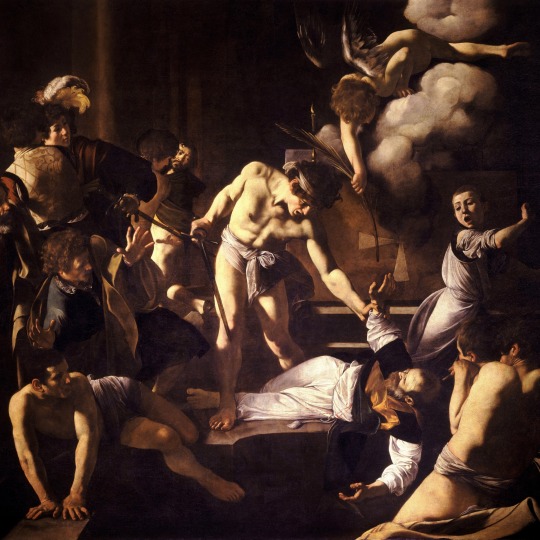
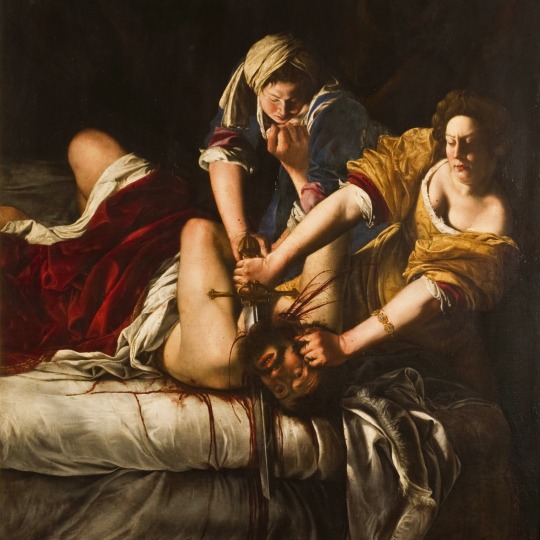

On Ugliness, Umberto Eco (2007)
The Hollow Crown – Richard II, dir. Rupert Goold (2012)
Sex, Violence and Faith: The Art of Caravaggio, Amelia Arenas (2016)
The Martyrdom of Saint Matthew, Caravaggio (1599)
Judith Slaying Holofernes, Artemisia Gentileschi (1620)
The Torture Garden, III, 3, Octave Mirbeau (1899)
178 notes
·
View notes